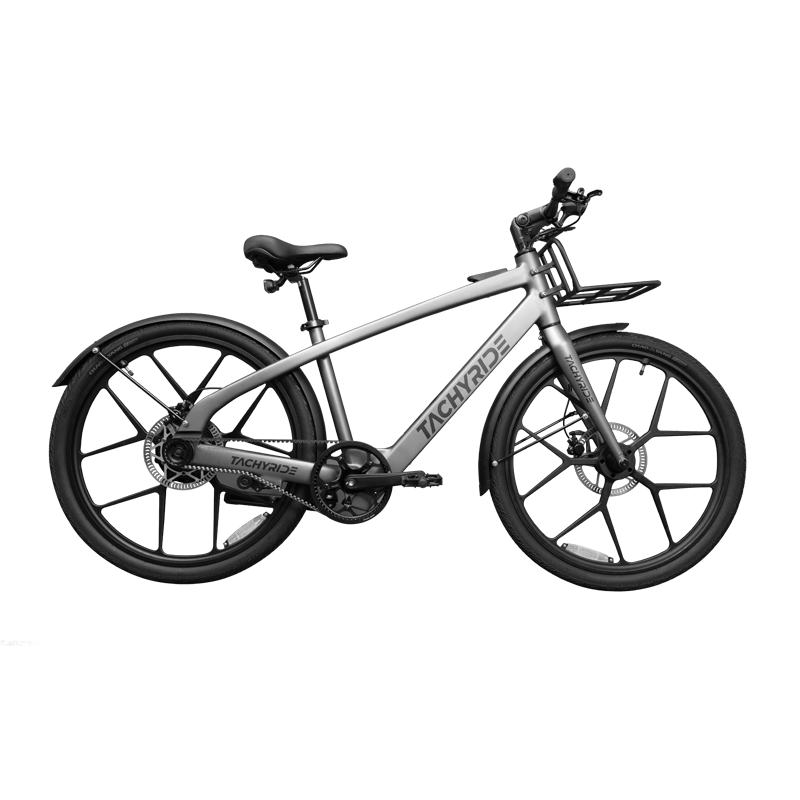לא רק שרכיבה על אופניים נחשבת לספורט ופעילות פנאי אלא גם לאמצעי תחבורה בר קיימא. תחילתה של עידן חדש של אופניים התפתח בתגובה לדאגה הגוברת בנוגע לאנתרופומטריה ועיצוב המרכז על האדם: אופניים של מכאניקה אנושית (HMB). הם נועדו להתחשב בידע מדעי של גוף האדם עם הנדסה מתקדמת ויצירת רכיבה יעילה, נוחה ומעוררת השראה יותר מאי פעם.

המושג מאחורי אופני Human Mechanics
במהותו, האופניים של Tachyride (MBIKE) הותאמו להרמוניה אידאלית עם הביומכניקה של גוף האדם. להבדיל מהאופניים הקלאסיים אשר הם סטטיים, MBIKE's ניתנים להתאמה בהתאם לצורך, מה שמאפשר התאמה מיטבית לכל משתמש. כתוצאה מכך, גישת זו מגבירה את הנוחות ומצמצמת את הגורמים שעלולים לפגוע ביעילות בנסיעות ארוכות.
תכונות עיקריות וחידושים
גאומטריה מתאימה של המסגרת: א MBIKE צורת וגודל המסגרת ניתן להגדרה מחדש כדי להתאים לממדים ספציפיים של רוכבים שונים. התוכנה משתמשת בנתונים מתוך ניתוח אנטומי וסגנון רכיבה כדי ליצור מסגרות המותאמות את צורתן בזמן אמת או דרך הגדרות מוגדרות מראש. תכונה זו עוזרת לאנשים לשמור על שיקום נכון וכך להפחית את הסיכוי לפציעה.
מערכות תלייה מתקדמות: לרוב, ל-MBIKE יש מערכות תלייה שניתן להתאים אישית על ידי כל רוכב, מעבר לאילוצים הקשיחים הקיימים באופניים אחרים. המטפסים הללו מוסיפים הלם וגם ויברציות ממסלול קשה, מה שמביא לשיפור הנוחות וגם הגנה מפני פגיעות במפרקים.
מרכיבים ארגונומיים: כל חלקים של אופניים, החל מהמַנְשֵׁאת וכלה במַושָׁב, בנויים תוך התחשבות במכניקה אנושית. המנשאות עשויות להיות מצוידות באוחזנים משתנים, דבר שפוחת את המאמץ על הקרסוליים, בעוד המושבים מיוצרים בצורה מאוזנת סימטרית סביב העצמות הpelvic כדי למנוע נקודות חמות בכל נקודה. педלים מצוידים ברמות שיטוף שונות כדי להתאים את הגלגול הטבעי של הרגל, ובכך מקטינים את המקרים של שברים חוזרים במאמץ.
התאמה מודולרית: בשונה מסוגים אחרים, רבים מהאופניים החכמים (MBIKEs) כוללים רכיבים מודולריים, מאחר שאנשים עוברים שינויים בגוף וצרכים. לכן, המנשאות, המושבים והפדלים הם חלק מהרכיבים שניתן להתאים או לשנות על מנת לענות על הדרישות המשתנות של המשתמש, לצורך שימוש גמיש וארוך טווח.
המדע של רכיבה ארגונומית
בעיקרון, כל עיצוב ארגונומי נועד להעצים את היחסים בין אדם למכונה. משמעות הדבר היא תשומת לב מדויקת לביאומכניקה ופיזיולוגיה של רכיבה על אופניים, MBIKE מחקר מראה שאופניים שאינן מותאמות כראוי הן אחת מהסיבות המרכזיות לפציעות כרוניות אצל רוכבי אופניים. כדי לפתור את הבעיה מהשורש, שילבו בין ביומכניקה וארגונומיקה בעיצובים הללו.
לדוגמה, ניתן לקבוע את זוויות תנועת האיברים בעת רכיבה באמצעות טכניקות מודל ביומכאנית. הזוויות הללו משפיעות על שיקולים בעיצוב, כמו אורך הקרנקים וגם מיקום המדריכים, המאפשרים מסלולי תנועה נורמליים בבני אדם. בנוסף, מאחר שהעומס מופץ באופן שווה על קבוצות שרירים ומפרקים מרובות, העברת הכוח יותר יעילת ואילו הבلى על הגוף מופחת.
יתרונות של אופני מנגנונים אנושיים
נוחות מוגזמת: העיצוב הארגונומי מבטיח שהרוכב שומר על שגרה טבעית וכך מפחית את הסיכונים הקשורים לכאבים בצוואר, בגב ולכתפיים. מעבר לכך שתומך בצרכים הגופניים של המשתמש, הוא מגביר את הנאה מהרכיבה על ידי חוויה טובה יותר.
ביצועים מוגזמים: כדי לשפר את הביצועים בכלל, אופניים חשמליות יכולות לאפשר העברת אנרגיה יעיל יותר מהרוכב לאופניים. רוכבי אופניים יכולים לרדוף טוב יותר, להתקדם במעלה ההר בפחות מאמץ ולנסוע מהר יותר.
הפחתת סיכון לפציעה: התאמה אישית ועיצוב ארגונומי עוזרים במניעת פגיעות נפוצות ברכיבה, כמו כאב בברך, סינדרום המנהל היד, ופצעים על המושב. במקום שאר האופניים יתאימו לרוכבים, מדובר במקרה בו האופניים הן אלו שמתאימות בצורה הטובה ביותר לגוף הרוכב, מה שמעמיס עליו פחות.
קיימותustainability): שימוש בחלקים בעלי איכות גבוהה ואשראים באופניים חשמליות אומר שזה נותר לזמן רב ולכן מפחית פסולת וצורך בהחלפות תכופות. בנוסף לכך, רכיבה על אופניים בעצמה היא פעילות ידידותית לסביבה ולכן מקטינה את פußע הפחמן.
העתיד של רכיבה
נוחות, יעילות ובטיחות הן קריטיות כשמתכננים את עתיד הרכיבה. עם התפתחות הטכנולוגיה והבנה טובה יותר של המכניקה של הגוף האנושי, נראה שאין גבול לכמה חדשנות יכולה להתרחש בתחום זה.
בעתיד עשוי להשתלב עם מוניטורים רפואיים דיגיטליים המספקים משוב בזמן אמת בנוגע לדיוקה של הوضعיה בזמן רכיבה. בהמשך, אינטליגנציה מלאכותית אמורה להשתלב עם עיצוב המרכז את האדם, כדי לפתח אופניים המותאמות את עצמן באופן אדפטיבי בהתאם ל מצב הפיזיולוגי של האדם או לתנאי הסביבה.


